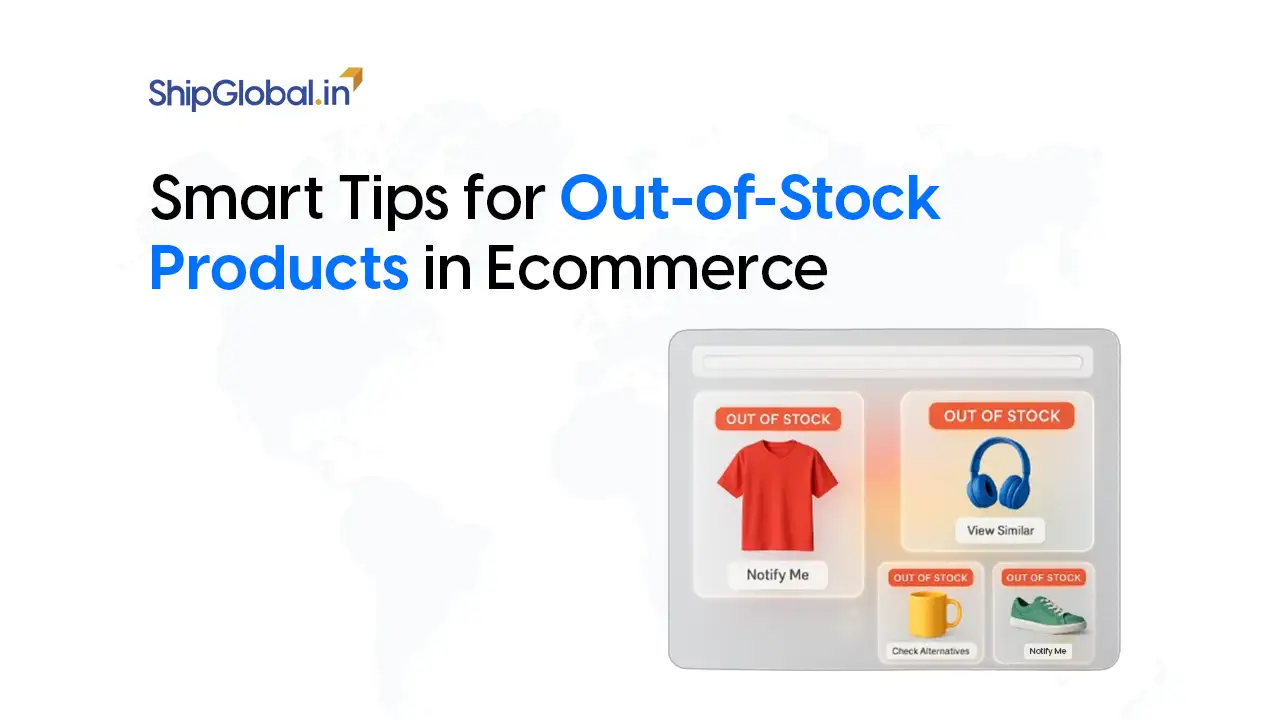Thinking of how to export food products from India to USA? With a growing demand for Indian spices, snacks, ready-to-eat foods and instant mixes, exporting to the USA can be a rewarding business.
But, let’s be real it is not as simple as packing your goodies and shipping them off! From regulations and paperwork to selecting the best shipping method, there is a lot that you must know and consider.
So if you’re thinking about how to ship food products from India to USA this guide breaks it all down for you, from FDA regulations for food exports to customs clearance and how to pack food products. We will tell you all while keeping things simple and easy to follow.
Understanding Regulations for Food Exports
FDA Regulations for Shipping Indian Food to the USA
The U.S. Food and Drug Administration (FDA) is super strict when it comes to food imports. Here’s what you need to know:
- Prior Notice to FDA: You need to inform the FDA before your shipment reaches the USA.
- Food Facility Registration: If you manufacture, process, or pack food, you must register with the FDA.
- Labeling Rules: Your packaging should include an ingredient list, allergens, nutritional facts, and an expiration date.
- FSMA Compliance: The Food Safety Modernization Act (FSMA) ensures that food is produced under hygienic conditions.
Messing up any of these steps could lead to shipment delays or even rejections, so it’s best to double-check everything!
Customs Clearance for Food Exports to USA
Clearing US Customs is another critical step in food exports. The U.S. Customs and Border Protection (CBP) works alongside the FDA to regulate incoming food shipments. To clear customs smoothly, exporters must ensure:
- Accurate Documentation: Required documents include Bill of Lading, Commercial Invoice, Packing List, Health Certificate, and Importer Security Filing (ISF).
- Harmonized Tariff Schedule (HTS) Codes: Using the correct tariff classification helps determine duties and taxes.
- Compliance with APHIS and USDA Regulations: Certain food products, like dairy or meat-based items, may require additional approvals.
Common reasons for shipment rejection include incomplete documentation, incorrect labeling, and non-compliance with FDA and USDA standards. So, pay close attention to the details!
Shipping Perishable Food Items to the United States
Perishable food products are food items that can spoil quickly if not refrigerated or kept at low temperatures. These products have short shelf lives. Some of the examples of perishable foods include dairy products, eggs, fruits, fish, and meat.
The USA takes food safety seriously, especially when it comes to perishable food imports. The Bioterrorism Act of 2002 (BTA) put strict rules in place to protect the food supply from potential threats.
Now to make things more clear here’s a list of prohibited food items to USA from India pdf.
List of Prohibited Food Items To USA from India PDF
| Food Item | Permitted/Prohibited | Notes |
|---|---|---|
| Fresh fruits and vegetables | Prohibited | High risk of pests and diseases |
| Meat and meat products (fresh, dried, canned, or cooked) | Prohibited | Not allowed regardless of processing |
| Dairy products (milk, yogurt, soft cheeses) | Prohibited | Generally not allowed unless specially processed |
| Homemade foods | Prohibited | Restricted due to contamination risk |
| Plants and seeds | Prohibited | Environmental risks and pest control |
| Dry spices (without seeds) | Permitted | Allowed if seed-free and commercially packed |
| Packaged snacks (biscuits, namkeen, sweets without dairy/meat) | Permitted | Allowed if free from meat or dairy content |
| Tea (dried leaves) | Permitted | Allowed in dried form |
| Coffee (roasted beans) | Permitted | Roasted coffee beans are permitted |
| Dry fruits and nuts (processed and packaged) | Permitted | Must be processed and packed |
Key Shipping Regulations for Perishable Foods
- Facility Registration:
- Any facility involved in manufacturing, processing, packing, or holding perishable food for the US market must be registered with the FDA.
- Exemptions include farms, restaurants, retail facilities, and non-profits.
- Prior Notice (PN) on Imports:
- Importers or their agents must submit a prior notice to the FDA before food arrives.
- Submission time: At least 4 hours before flight arrival and no more than 5 days in advance.
- Exemptions: Personal food shipments, household food, food bought by travelers and mailed to their US address.
Required Documentation for Perishable Food
- Standard food name or trade name
- Exact quantity and packaging details
- Batch numbers or unique identifiers
- Full details of manufacturer, supplier, and shipper, including FDA registration numbers (if applicable)
- Certificate of origin (COO)
- Clear identification on the airway bill and invoice
If you’re dealing with seafood, meats, or anything involving endangered species, the US Fish and Wildlife Service (FWS) and CITES regulations may apply. Also, plant and plant-based foods might require a Lacey Act declaration, ensuring there is no involvement of illegally traded plants.
Keep Your Food Fresh: Mastering Food Packaging for the Win
Good packaging keeps your food fresh and ensures it arrives in perfect condition. Here’s what you need:
- Use Food-Grade Packaging: FDA-compliant materials like BPA-free plastic, vacuum-sealed bags, and laminated pouches.
- Follow Labeling Rules: Include the product name, weight, ingredients, expiration date, and nutritional facts.
- Use Tamper-Proof Seals: These prevent contamination and ensure food safety.
- Use Refrigerated Containers: A must for frozen and perishable items.
- Vacuum Sealing and Nitrogen Flushing: Keeps food fresh for longer.
Air Freight vs. Sea Freight: What’s Best for Food Exports
Depending on which food product you’re shipping, you can choose between air freight and sea freight.
Comparison Table: Air Freight vs. Sea Freight
| Criteria | Air Freight | Sea Freight |
|---|---|---|
| Best for | Perishable food (dairy, frozen food, RTE meals) | Non-perishable food (spices, grains, dry snacks) |
| Transit Time | 3-7 days | 20-45 days |
| Cost | More expensive | More affordable |
| Storage | Requires temperature control | Reefer (refrigerated) containers available for perishables |
Key Considerations for Selecting a Reliable Freight Forwarder
Freight forwarders play a crucial role in handling customs clearance, regulatory compliance, and end-to-end logistics. When choosing a freight forwarder to ship food products to the US, look for one with:
- A global shipping network
- Experience in handling food exports
- Temperature controlled shipping options
- Expertise in customs clearance and documentation
A good freight forwarder can make your life so much easier and the entire process hassle-free.
Conclusion
So, there you have it! Exporting food products from India to USA doesn’t have to be a nightmare.
If you follow FDA regulations, pack your food correctly, clear customs smoothly, and work with a reliable freight forwarder, you’ll be on your way to shipping success.
With careful planning and the right logistics partner, your food products can reach the USA hassle-free—and your business can grow in the global market.
Now, go ahead and start shipping!
FAQs on Exporting Food Products from India to the USA
The FDA requires prior notice submission, food facility registration, proper labeling, and compliance with the Food Safety Modernization Act (FSMA).
To clear US Customs, you need a Bill of Lading, Commercial Invoice, Packing List, Health Certificate, Importer Security Filing (ISF), and the correct Harmonized Tariff Schedule (HTS) Codes.
Use FDA-compliant, food-grade packaging, ensure proper labeling, and use vacuum sealing, nitrogen flushing, or refrigerated containers for perishable items.
Perishable food shipments must comply with the Bioterrorism Act of 2002, requiring facility registration, prior notice submission, and detailed documentation of the food product, manufacturer, and country of origin.
Air freight is ideal for perishable items like dairy and frozen food due to its faster transit time (3-7 days), while sea freight is more cost-effective for non-perishable food like spices and dry snacks.
Yes, personal food shipments, household food, and food purchased by a traveler and mailed to their US address are exempt from prior notice submission.
Look for a freight forwarder with experience in handling food shipments, temperature-controlled shipping options, a strong global network, and expertise in customs clearance.
If exporting seafood, meat, or endangered species-based food, compliance with US Fish and Wildlife Service (FWS) and CITES regulations is necessary. For plant-based foods, a Lacey Act declaration may be required to confirm legal sourcing.








